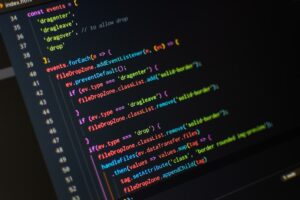Computational Thinking
What is it?
Computational thinking refers to the thought processes involved in expressing solutions as computational steps or algorithms that can be carried out by a computer. This requires knowledge of computational processes and computers themselves. This is the process of breaking down problems into many small and simple steps that make the problem more manageable.
Skills for Success
The BBC breaks down the four cornerstones of computational thinking. These include decomposition, pattern recognition, abstraction, and algorithms. Decomposition is breaking down a problem into more manageable parts. Pattern recognition is looking for similarities within problems. Abstraction is focusing on the important information and ignoring irrelevant information. Lastly, algorithms are the ability to develop step-by-step solutions to the problem or how the problem will be solved.
Success in STEM
STEM Professionals
Computational thinking offers great skills for success in STEM and can lead to a better understanding of the subjects. STEM professionals benefit from utilizing this system of thinking to excel in their careers. One study found that 30-35% of STEM professionals use computational thinking in their everyday lives, and among these people were mostly theoretical researchers. The same study also states that understanding how modern scientists think can better prepare STEM students in the classroom.
More Than Just Computer Skills
Computational thinking can be applied to many different areas of study, especially STEM subjects. However, these skills extend beyond computer or technical subjects and problems. The emphasis should be placed on the thinking rather than the computational aspect of the thought pattern. Building computational literacy skills are considered to be one of the four pathways for success in STEM education.

STEM Education
Complementing STEM
The skills acquired with learning computational thinking complement the other aspects of STEM education and can improve STEM understanding. Computational thinking is intricately linked to STEM and project-based learning. Bringing computational thinking into the classroom can help students achieve STEM learning objectives. Coding and computational thinking go hand and hand, with one the other will be easier to comprehend. The analytical thinking skills with STEM make computational thinking a great integration to help students in the field of STEM.

Integrating into the Classroom
Setting up technology in the classroom is a great way of introducing computational thinking to students. Once the technology is in place incorporating computational thinking into lesson plans will be easier. You can find helpful resources here. This is a great stepping stone but not accessible to all, keep reading for more tips.
As previously stated, coding and computational thinking complement each other very well. By teaching coding students will pick up on computational thinking patterns and start thinking more computationally. Coding is a great skill for students to have. Making coding more accessible is very important as this is necessary to make the environment more inclusive. Coding can be taught in many ways and doesn’t necessarily require technology; check out these tech-free STEM activities.

Integrating computational thinking into math and science may seem less obvious than it is in technology, but that does not mean it is impossible. Math includes word problems that can be broken down into steps, like decomposition in computational thinking. Science can demonstrate computational thinking through if-then logic and much more.
By Olivia Kirven

